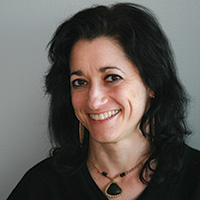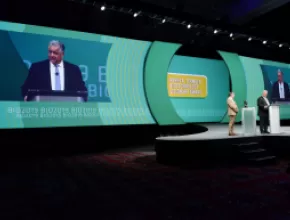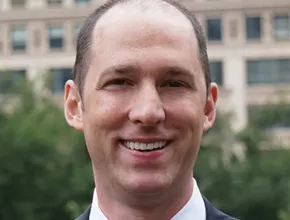When the 2,000-page federal Patient Protection and Affordable Care Act was signed into law last year, the medical meetings industry had to add another set of regulations to its growing list of rules and restrictions.
The healthcare reform act contains language from the original Physician Payments Sunshine Act, which requires companies to begin recording any physician payments and “transfers of value” that are worth more than $10 starting Jan. 1, 2012, and to report them on March 31, 2013.
Transfers of value range from consulting fees to food and travel, and include gifts, honoraria and entertainment. By Sept. 30, 2013, the Department of Health & Human Services (DHHS) is slated to make the reports publicly available in a searchable database.
Compliance Issues
“There are different kinds of compliance issues our industry is dealing with right now,” says Jennifer Palcher-Silliman, director of content and education for the Healthcare Convention & Exhibitors Association (HCEA). “There is voluntary code like the PhRMA Code, revised in 2008 from 2002, for the pharmaceutical industry, and the AdvaMed Code for the medical device industry. Those two codes have seen similar reincarnations in certain laws around country—state laws that require disclosure to industry and healthcare providers.”
States with their own strict laws include Massachusetts, Vermont and Minnesota. By contrast, the Sunshine Act is not a law, but rather a regulation for reporting payments.
Information that must be submitted by manufacturers includes the name and business address of the covered recipient, the National Provider Identifier if the recipient is a physician, the amount of the payment or other transfer of value, the dates on which the payment or other transfer of value was provided to the covered recipient, the name of the product to which the payment or other transfer of value relates (if the payment is related to a specific product), a description of the nature of the payment or other transfer of value, a description of the form of the payment or other transfer of value, and any other categories of information regarding the payment or other transfer of value the DHHS deems appropriate.
“I think that probably means that companies will need to be walking on egg shells when it comes to doing much that would be relevant for meeting planners,” says Kim D. Slocum, president of KDS Consulting, a consultancy for healthcare organizations.
Penalties for violations of the reporting requirements can be as high as $150,000 for inadvertently failing to report payments, and more for knowingly failing to report payments.
“Summaries talk about reporting, not about limits or meetings,” Slocum says. “Payments to physicians and teaching hospitals—travel, consulting fees, honoraria, compensation—it affects meeting planners in a big way. They are not being singled out, but it’s part of a much broader look at how business is transacted in healthcare.”
Even if the healthcare act is modified by the time the Sunshine Act would take effect, Slocum predicts that part of the bill will stand.
“The Sunshine provisions were pretty popular, almost bipartisan,” Slocum says. “It’s one of those few things in healthcare where people reach across isle, hold hands and sing ‘Kumbaya.’”
The new reporting regulations are only one part of the changing landscape for medical meetings.
“The industry’s economics are still far from ideal,” Slocum notes. “As a result, cost-cutting pressures are still in full swing in most of the firms I work with. Since most medical meetings tend to be seen by senior management—rightly or wrongly—as ‘nice to have’ rather than ‘need to have,’ they become obvious targets for budget reductions.
“Companies have realized what they have done in the past is not allowable or practical in the future—the environment itself has changed,” he continues. “There is so much more we can do on a virtual basis with the Internet, webinars, social media. That has cut down a lot of the travel in the pharma business apart from what you see attached to legal and regulatory challenges.”
According to Cindy D’Aoust, vice president of shared services for Maxvantage, a meetings management company, the continued focus on transparency will drive companies toward even greater compliance with regulatory guidelines.
“It is clear what they have to report on,” she says. “How they do it is completely unto themselves; it can be using internal systems or external providers. Some are building internal resources and others going the other way. Everybody is probably grumbling that is difficult, not easy to obtain the data and report on the data.
“Nobody disagrees with the need for transparency, but there is frustration on the part of suppliers and pharma organizations,” she continues. “There is a lot of data to capture and it is complex and an increased cost for them.”
She notes that planners are being forced to adapt to a whole new environment for pharmaceutical and medical meetings, noting that many companies are shifting their meetings away from high-profile or high-cost destinations as well as from luxury resorts and casino properties. Changes are also being made to food and beverage offerings.
“Due to daily per diem guidelines for food and beverage, we are working with hoteliers and restaurants to develop healthcare-appropriate quality menus that are within guidelines and provide variety for attendees,” she says.
D’Aoust also notes an increased use of virtual components at medical meetings.
“With the need to archive content, expand audiences and reduce costs, we are seeing a significant increase in the use of virtual components such as satellite broadcasting,” she says. “This approach to meeting design also minimizes the need for key speakers to travel, which is a competitive advantage for companies.”
Jody Brandes, senior meeting partner for Genentech, is seeing the effects of the stricter regulations both from the codes already in place and the upcoming Sunshine provisions.
“We have to be more diligent with people signing in and out of meetings and events. We have to know who is there and know how much food they ate,” she says. “We need to report how much they are getting coming to a meeting as far as hotel and food and beverage costs.”
Some hotel suppliers are catering to the restrictions, according to Brandes. The challenge is in cities like New York, where food costs can greatly exceed what companies are allowed to spend on meals.
“Good hotels are realizing this and putting together pharmaceutical meal packages,” Brandes says. “It’s hard to tell a doctor you have to have cold cuts for lunch in New York, but in Dallas you can have a hot buffet.”
Brandes is seeing packages for breakfast, lunch and breaks with a fixed, per-person price, rather than offering meals a la carte.
“I’m hoping that more hotels realize and adopt it,” Brandes says. “When we are really on top of it, we put it in the RFP. Good sales people are recognizing it and selling those packages to us as a benefit.”
There have been other changes in recent years, including group activities, which for the most part have been eliminated completely.
“We used to do parties and now if we do a customer event, it really needs to be for scientific discussion and not networking,” Brandes says. “Perception is still very important. We still don’t want to be on the front page of the Wall Street Journal for having an event or meeting with all the hoopla.”
Location is an issue, according to Brandes.
“We can have meetings in Miami but not South Beach,” she says. “We look mostly at primary airport destinations and hubs like San Francisco, Chicago and Dallas where people don’t have to connect or connect more than once. We’re still avoiding resort properties.
“There are still hotels we’re not allowed to use—five-stars and ones perceived as the best, like Four Seasons, Ritz-Carlton,” she continues. “We can do Las Vegas meetings, mostly because of volume/capacity.”
Susan Parren, an independent planner with a specialty in CME (continuing medical education) meetings, believes the changes are here to stay.
“With CME, a lot has changed. Meetings have to stay at a certain budget. It’s not where they are booking, but can they afford to do their meetings there,” she says. “We’re not allowed to pay for parking anymore. I haven’t seen any entertainment in my meetings for the last five or six years.
“We just have a speaker come in, sometimes the reps are there. Now we’ve stopped giving away amenities, like pens,” she continues. “Spouses can’t come to meetings anymore. Budgets are a lot tighter and I’m sure things will change with the new Sunshine provision. A lot are picky with the restaurants they can go to. They don’t do any resorts—
I think that is a thing of the past, too.”
Virtual meetings and webcasts are growing in popularity, according to Parren.
“I’ve done a lot of webcasts, but they are still having meetings,” she says. “I don’t know what the future holds. To me, planners should always be aware of the changing environment; we have had to adapt to many changes.”
Despite the extra work, planners generally agree the Sunshine provisions are a potential benefit.
“I think overall it’s good as far as transparency,” Brandes says. “I just don’t want it to go too far. I do think overall for the industry it is good—for people to understand we’re conscious of these things and not just sending doctors golfing and on trips to Hawaii.”
Slocum doesn’t see “the halcyon days of 1995” returning anytime soon, however.
“There are too many macroeconomic forces driving attention to healthcare in U.S. right now,” he says. “It doesn’t mean meeting planning is going away. It will be on a somewhat smaller scale, at different venues in different forms. But medical meetings won’t have the Wild West feel they had 15 years ago.” MFMA






